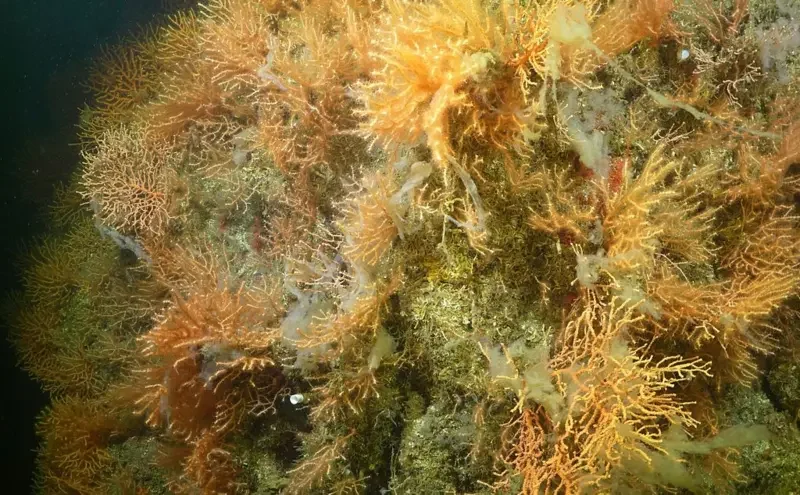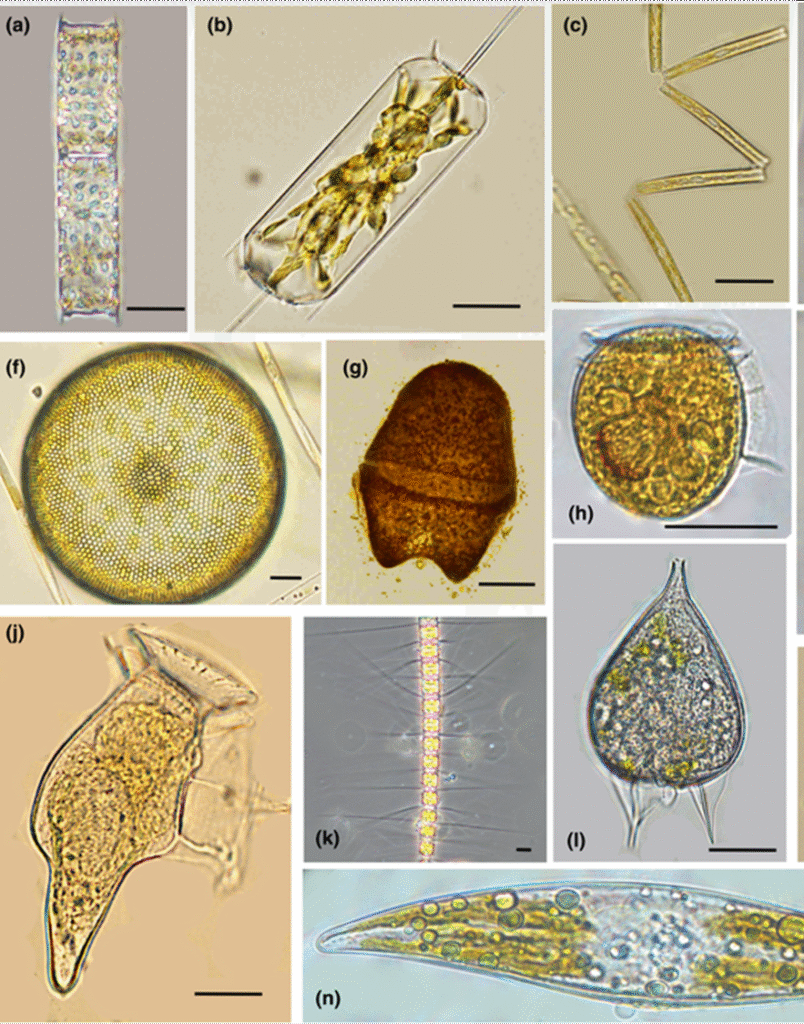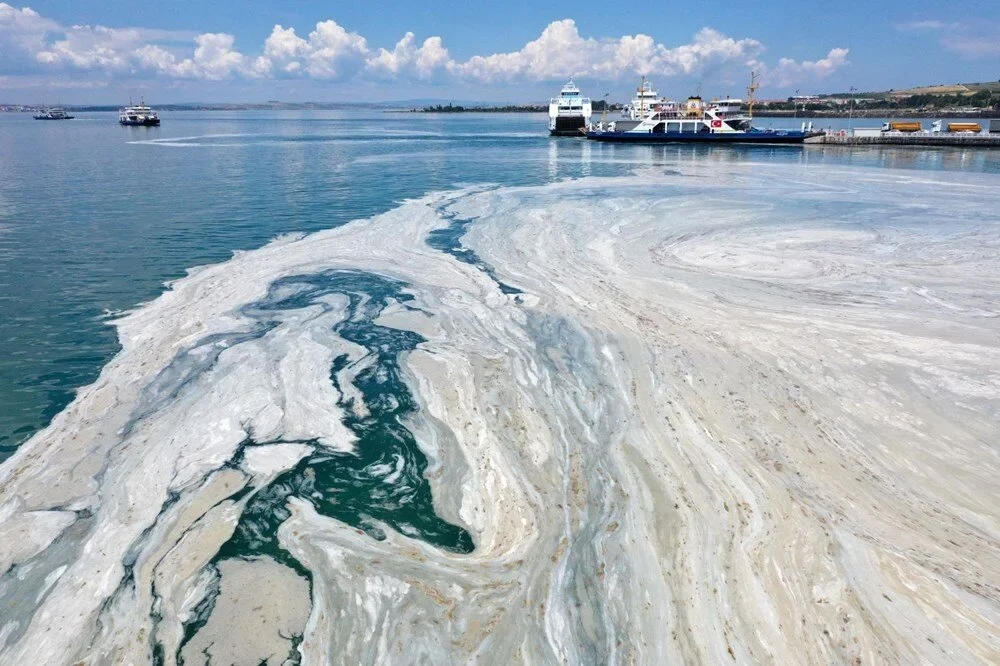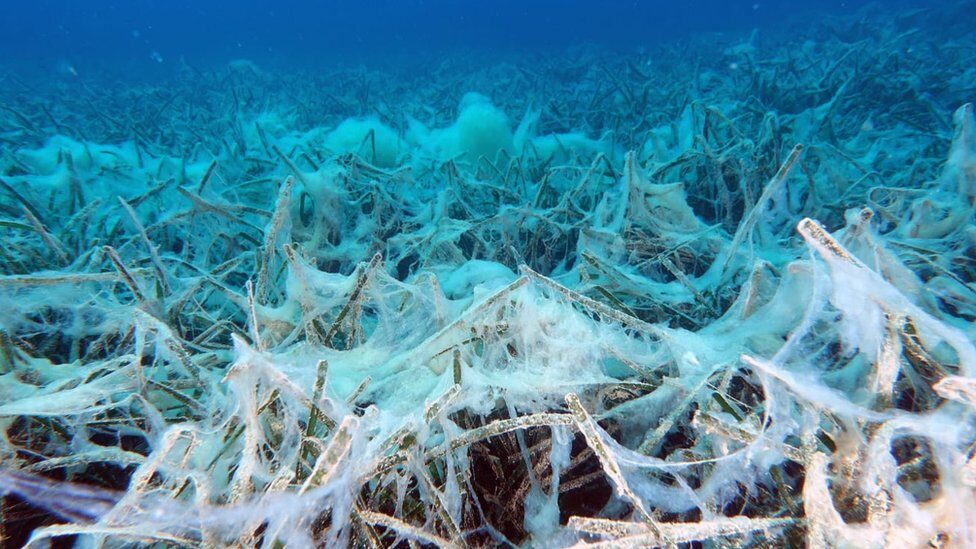Today, I want to talk about something that’s been creeping up in the Marmara Sea of Turkey—mucilage (sea snot). It’s becoming a bigger problem, and we might be seeing more of it in the near future.
You may not be familiar with the term “sea snot.” It might sound like something from a cartoon, but this gooey phenomenon is very real—and it’s threatening marine life, local economies, and even our summer holidays.
Let’s take a closer look at what sea snot is, why it’s appearing in Turkish waters more frequently, and what’s being done to stop it.
What Exactly Is Sea Snot?
Scientifically known as mucilage, sea snot is a slimy substance made up mostly of mucus secreted by phytoplankton—microscopic marine algae. This sticky mess can also include waste from bacteria, burst cells, and other organic materials.
According to biological oceanographer Alice Alldredge, it’s essentially a soup of polysaccharides (complex sugars) released when sea conditions go haywire (out of control). The result? A floating, jelly-like mass that can spread for kilometers.
Why Is It a Big Problem in Turkey?
Although mucilage has been observed for centuries—first recorded in 1729 in the Gulf of Mexico—it’s become a major issue in Turkey’s Sea of Marmara in recent years.
Outbreaks were recorded in 1992, 2007, and 2008, but nothing compared to the massive spread in 2021 and 2022, which lasted from autumn through early summer. And still in 2025, the mucilage can be seen in deeper layers.

What Causes It?
Several key factors are to blame:
- Pollution overload: Industrial waste and untreated sewage from 25 million people have filled the Marmara Sea with nutrients like nitrogen and phosphorus.
- Water layering: The Marmara Sea naturally traps different water masses, creating stagnant layers that don’t mix well.
- Rising temperatures: Global warming has raised sea temperatures by 2°C over the past 40 years.
These factors create a perfect storm for phytoplankton to bloom uncontrollably—then die, break down, and release massive amounts of organic matter, fueling mucilage formation.
How Does It Form?
Here’s a straightforward explanation:

- Excess nutrients → Phytoplankton bloom
- Dead cells → Release of organic material
- Hungry bacteria → Can’t keep up
- Result → A thick mucous layer full of microorganisms
And the worst part? Most of it sinks to the seafloor, creating dead zones where marine life can’t survive.
What Are The Ecological Consequences?
Mucilage isn’t just an eyesore—it’s an ecological disaster:
- Blocks sunlight, affecting photosynthesis and the entire food chain.
- Smothers the seabed, killing sponges, oysters, mussels, and corals.
- Consumes oxygen, leading to suffocation of fish and other species.
In April 2021 alone, millions of fish died. Their eggs and larvae were particularly at risk, with long-term consequences for fish populations.
Human Impact: More Than Just the Sea
According to Prof. Mustafa Sarı from Bandırma Onyedi Eylül University:
- Fishing communities are already seeing declining catches.
- Small tourism businesses around the Marmara Sea are suffering.
- Wider ecosystems, like the Black Sea and Aegean, are also affected since the Marmara connects them.
What’s Being Done?
Thankfully, some creative solutions are already in action such as: Natural Bacteria Cleanup
A team from Istanbul University, led by Prof. Gülşen Altuğ, used local marine bacteria to break down mucilage in the sea. Applied twice daily, this method cleaned the surface layer within days, with no harm to marine ecosystems.
Safe Disposal Methods
Collected mucilage was:
- Filtered and dehydrated
- Evaporated in soil-based lagoons
- Stabilized with beneficial bacteria
- Disposed of safely
The filtered water was returned to the sea without harming underground water sources.
How Can We Prevent this from happening?
Stopping mucilage requires long-term effort and cooperation. Key prevention strategies include:
- Oxygenation: Such as pumping oxygen into deep waters to improve circulation.
- Stricter pollution control: Holding polluters accountable and improving sewage treatment.
- Coastal cleanup campaigns: Mobilizing government and citizen efforts.
- Scientific monitoring: Tracking environmental changes in real-time.
- Public awareness: Teaching communities how pollution leads to sea snot.
- Reducing plastic use: Especially single-use plastics that contribute to microplastic pollution.
Final Words
Sea snot may seem like just another environmental issue, but I think it’s a powerful reminder of how human actions can disrupt natural systems. The crisis in the Sea of Marmara shows how pollution, climate change, and poor regulation can combine to create real, visible damage.
But the good news is, with science, community effort, and smarter policies, we can fix this.
The sea itself contains so much life in it, and it’s our duty to preserve and protect it. Let’s be the guardians our seas deserve, before the tides turn.

References
Anadolu Agency. Scientist warns of ecological disaster intense mucilage may cause. (2021).
BBC News. Mucilage returns to the Sea of Marmara? What about other seas? BBC Turkish (London), 8 June 2025.
New Scientist. Sea snot swirls in Turkey’s Sea of Marmara reach record size. (2021).
NTV. Mucilage in Istanbul is seen from space. (2021).
The Scientist. Why Turkey’s Sea of Marmara is full of marine snot. (2021).
TRT Haber. Surface mucilage was cleaned, and deep mucilage was also removed. (2022).

